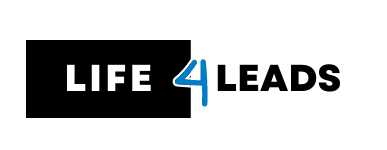SEO or search engine optimization has become indispensable to creating high-quality website content and sharing it with fans. But for those unfamiliar with it or the technical terms surrounding it, this can often leave them disoriented – to help with this, we have created this list of SEO terms to assist in understanding them more quickly.
A
Anchor Text || Anchor text is text used within hyperlinks that directs users to specific web pages. Most websites show their linked text in blue with underlining for increased visibility, changing to purple upon click-through. Well-crafted anchor texts are integral in helping search engines understand the content of linked destination pages.
b
Blog
A blog can serve as an integral component of your website, offering an outlet for content publication on an ongoing basis. Each post also presents an opportunity to employ SEO techniques in order to increase search engine visibility – the effectiveness of which directly impacts its ranking in search results.
c
Conversion Form
A conversion form allows your website to collect visitor information that can be used to convert visitors into potential leads and increase sales conversions. By collecting visitor data through conversion forms, businesses are better positioned to communicate with individuals interested in your products or services and pursue conversion opportunities more efficiently.
d
Domain
A domain represents the primary address for your website. Domain registration can be acquired from hosting providers like TSO or GoDaddy; to ensure smooth site operations, it’s essential to renew it annually and register your domain again with them.
f
Above-the-Fold
A website page’s “above the fold” refers to any portion that can be seen without scrolling; typically, this would be on a user’s screen or browser window. Content that falls above this area holds greater priority as it’s easily viewable – it is essential that critical pieces of information, such as contact info, are displayed here for maximum exposure.
h
Headings
Headings Text on your website or blog should be structured using headings to effectively organize content while simultaneously adding essential keywords into SEO strategy. Most titles use H1 or H2 tags.
Please see my previous blog post about what causes diarrhea for more information.
i
Inbound Link
An inbound link is any hyperlink originating from one website to another and providing access. These inbound links have a significant positive effect on SEO when they arise from high-ranking pages. At the same time, some might perceive inbound links as demanding reciprocity actions from both sites involved; in reality, these valuable assets help increase website visibility significantly.
j
JavaScript
JavaScript is a programming language commonly employed to produce interactive web content, including JavaScript-generated pages. While search engines initially struggled to index such pages, efforts have been undertaken over time to increase their comprehension and indexation capabilities of such material.
k
Keyword
A keyword is any term or phrase typed into search engines by users looking for specific information. Understanding keywords is integral to effective SEO as they form the basis of content production and optimization strategies.
l
Long Tail Keyword
A Long Tail Keyword is composed of multiple-word search phrases that target specific audiences while drawing highly targeted search traffic to websites. They play an essential part in SEO by reaching niche audiences while simultaneously driving highly relevant search traffic to them.
m
Meta Description
A 160-character limit meta description summarises the content of any web page and is crucial for SEO as it appears in search engine results, potentially increasing click-through rates from users. Including keywords relevant to that particular page’s subject matter in their description increases their effectiveness.
n
Nofollow
A nofollow attribute can be added to a hyperlink in order to prevent it from receiving SEO credit from search engines, typically used with external links that a website doesn’t wish to endorse while not being applied to inbound links.
p
PPC or Pay-per-click
While slightly distinct from SEO, Pay-per-click advertising uses keywords to target audiences in paid advertising campaigns. With platforms like Google Ads offering Pay Per Click services, bidding on keywords for targeted users allows Pay Per Click ads to appear directly at relevant users.
r
Ranking Factor
Search engines weigh numerous factors when ranking websites in search results, including inbound/outbound links, content quality, and technical aspects of their web pages. Search engines typically consider factors like these when making their decision.
s
Social Media
Platforms such as Instagram, Facebook, Twitter, LinkedIn, Snapchat, and YouTube provide adequate outlets for content promotion. Integrating these social networks into your website ensures an excellent user experience, while linking back from social media increases traffic to it.
t
Title
Your content’s title plays a pivotal role in drawing in visitors, and SEO rankings since its text should contain keywords relevant to its keywords for enhanced search visibility in search results.
If you’ve struggled with crafting compelling titles, check out this HubSpot article for inspiration: “Craft Irresistible Headlines and Blog Titles That Captivate Your Readers.”
u
URL
URL, or web address, identifies an individual page on your website, such as www.example.io/contactus in this example.
To Conclude
When trying to go into the realm of SEO and technical SEO, there are a few very fundamental things you need know, which are covered in our guide to SEO words. Making an educated choice on the topics you should cover is always aided by researching SEO and keeping an eye on what your rivals are doing.

